Have you ever wondered what does caviar taste like? Believed to be a delicacy, it’s a very expensive food item that might make your stomach turn at first glance due to its unmistakable smell. But knowing the taste can help you decide whether or not this delicacy is right for you and your palate. In this blog post, we’ll explore the flavor of caviar, learn how best to serve it, discuss potential health benefits and risks associated with eating this uncommon seafood product. Read on if all these things about caviar have intrigued your curiosity.
Contents
What Is Caviar?
Before we dive into what does caviar taste like, let’s learn what is caviar known for? Caviar is a delicacy made from the roe (eggs) of various types of sturgeon fish. The roes are processed, salted and packaged into tins or jars for consumption. Depending on the species of sturgeon, caviar can range in color from black to golden-brown.
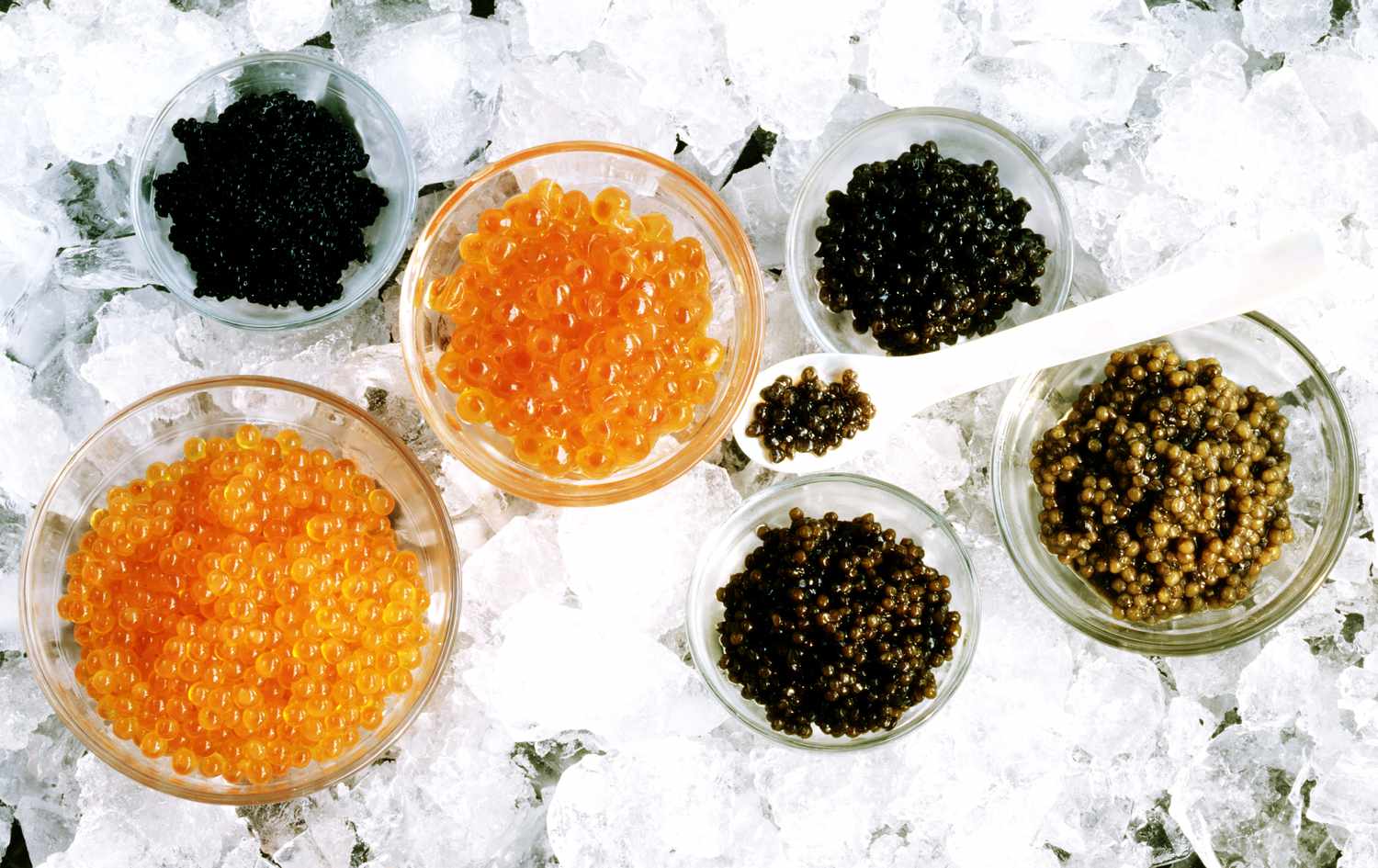
The Nutrition Information Of Caviar
Caviar is an incredibly healthy food, packed with a variety of essential nutrients. It is high in Omega-3 fatty acids and contains vitamins A, B12, D and E as well as minerals like phosphorus, calcium and iron. Caviar also contains a wide range of antioxidants which can help reduce inflammation throughout the body.
Overall, caviar is an indulgent and tasty treat that can also provide a wealth of nutrition benefits. While it may be expensive, its luxurious taste and impressive health benefits make it worth the cost for those who can afford it.
What The Health Benefits And Risks Of Eating Caviar?
Caviar is a high-fat food, with some varieties containing up to 70% fat by weight. It is also rich in omega-3 fatty acids, protein, vitamins and minerals. As such, it has potential health benefits when eaten in moderation. However, due to its high sodium content and potential mercury contamination from overfishing, caviar should be consumed in moderation.
Regular consumption of caviar may help reduce inflammation, improve joint health and lower cholesterol levels. It has also been linked to improved cognitive function and better heart health. Additionally, the omega-3 fatty acids found in caviar have been shown to decrease risk of stroke, depression and dementia.
On the other hand, due to its high fat and sodium content, caviar can have adverse effects on heart health when consumed in large quantities. As such, people with existing cardiovascular conditions should avoid eating caviar or limit their consumption to small amounts. Additionally, some varieties of caviar may contain mercury which can be dangerous if consumed in large amounts.
Therefore, it is important to research the type of caviar you are buying in order to ensure that it is sustainably sourced and free from mercury contamination. Additionally, moderate amounts of caviar can be beneficial when incorporated into a healthy diet.
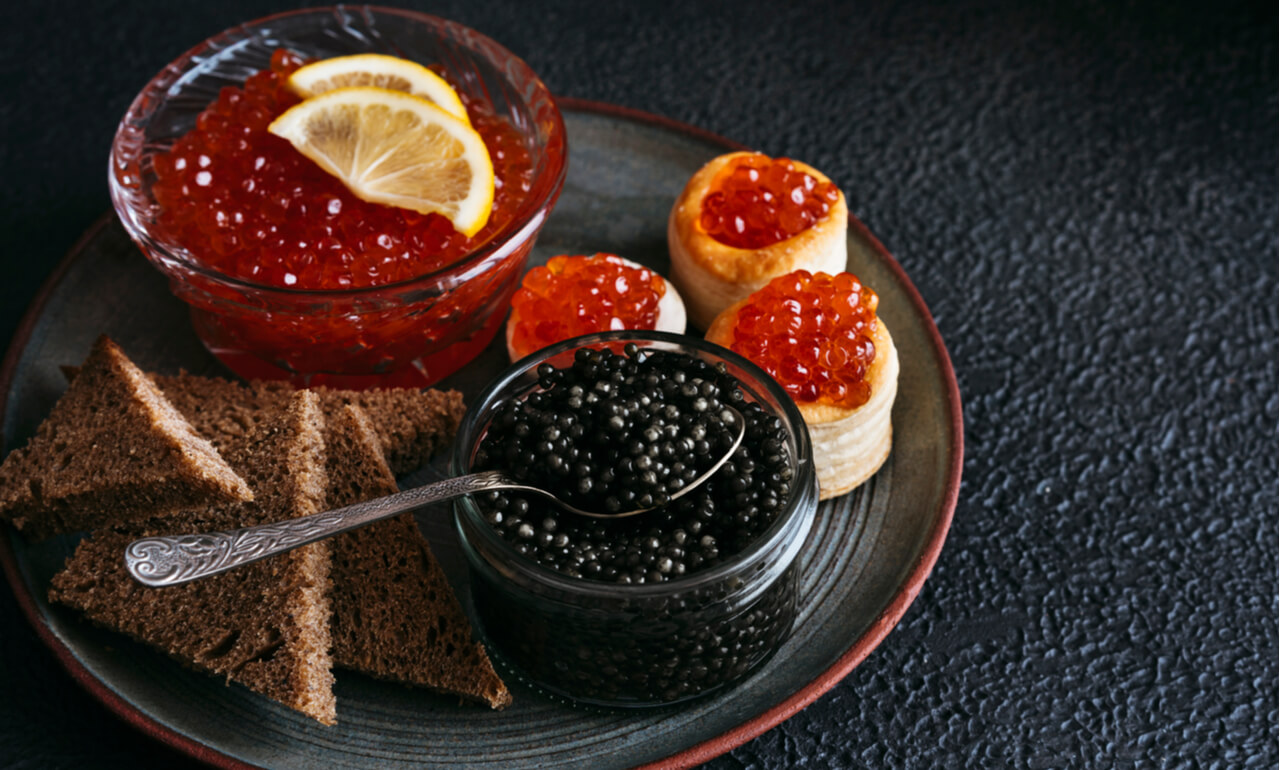
A Brief History About Caviar
Caviar was once plentiful and relatively inexpensive in the 19th century, but it gradually became scarce as sturgeon populations declined due to overfishing. Today, caviar is considered a delicacy reserved for high-end dining experiences, and it’s often found on menus at fancy restaurants.
What Does Caviar Taste Like?
Caviar has a distinct flavor that can range from salty and briny to creamy and delicate. Depending on the type of sturgeon used and its preparation, some varieties may also have a slightly sweet aftertaste. Caviar is often paired with a range of accompaniments such as blinis (Russian-style pancakes), creme fraiche, lemon wedges, pickles and more to enhance the taste. It is also known to have an umami-like taste that lingers on the tongue. If you still wonder what does caviar taste like, let’s watch this video to have the answer about it.
Why Does Some Caviar Taste Different Than Others?
Different types of caviar can taste different due to the species of sturgeon used to make it. For example, beluga sturgeon roe has a milder flavor than osetra or sevruga caviar. Additionally, the salting process used during production can also affect the flavor and texture of caviar.
The Unique Taste Of Each Type Of Caviar
Beluga Caviar
Beluga caviar is a type of sturgeon roe that has a mild, buttery flavor and a delicate texture. It’s considered to be the crème de la crème of all caviar types due to its luxurious taste and appearance.

Ossetra Caviar
Osetra caviar is also made from fish eggs, but it has a nuttier, more robust flavor than beluga caviar. It is slightly lighter in color and has a firmer texture than its beluga counterpart.
Kaluga Caviar
Kaluga caviar is a hybrid of two sturgeon species, the Amur and the Huso dauricus. It has a deep color and an intense flavor that’s slightly salty but still mild.
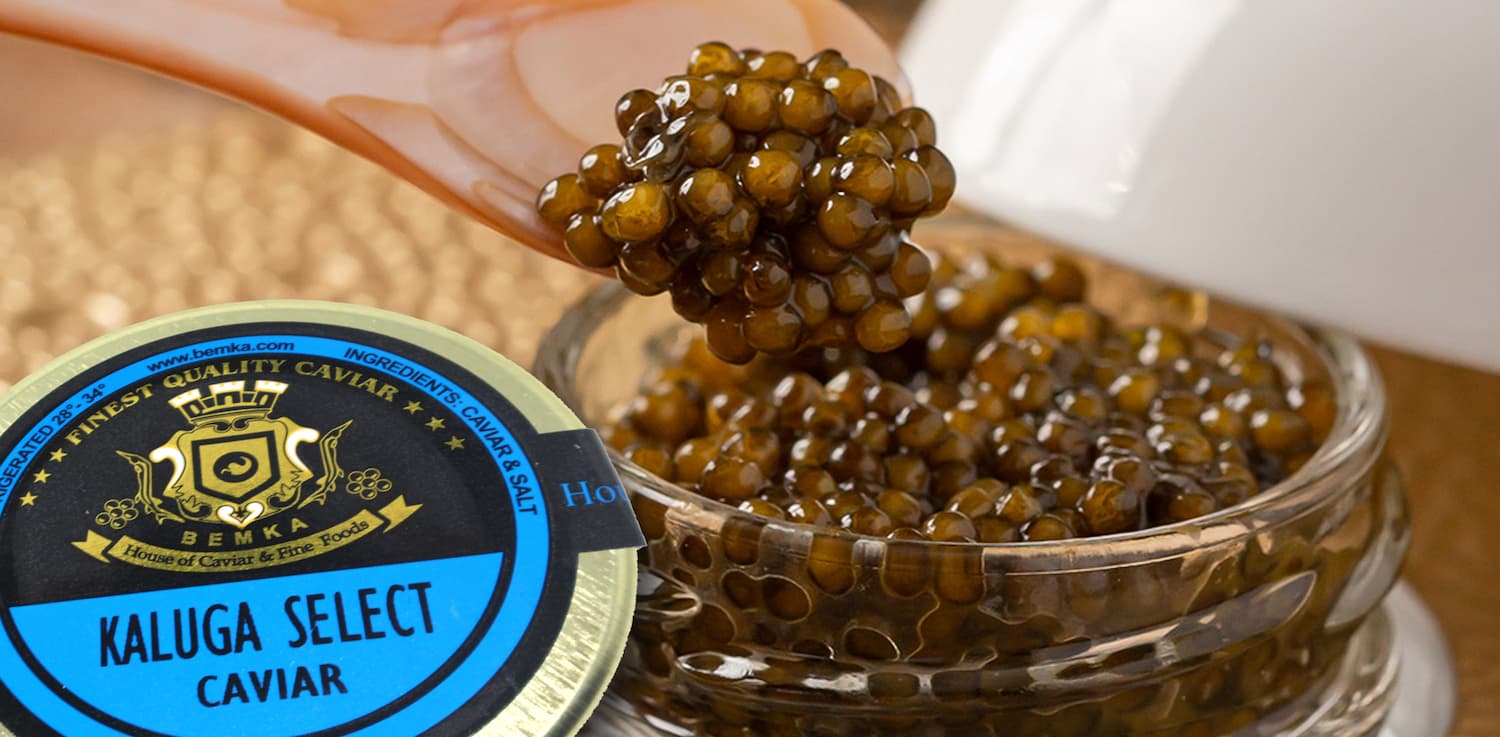
Sterlet Caviar
Sterlet caviar is made from the roe of the sterlet sturgeon, which has a milder flavor with hints of nuttiness. It is also typically more expensive than other types of caviar due to its rarity.
Sevruga Caviar
Sevruga is the most common type of caviar, but it still has a unique taste that sets it apart from other varieties. This caviar has a brinier, more intense flavor and is usually smaller in size.
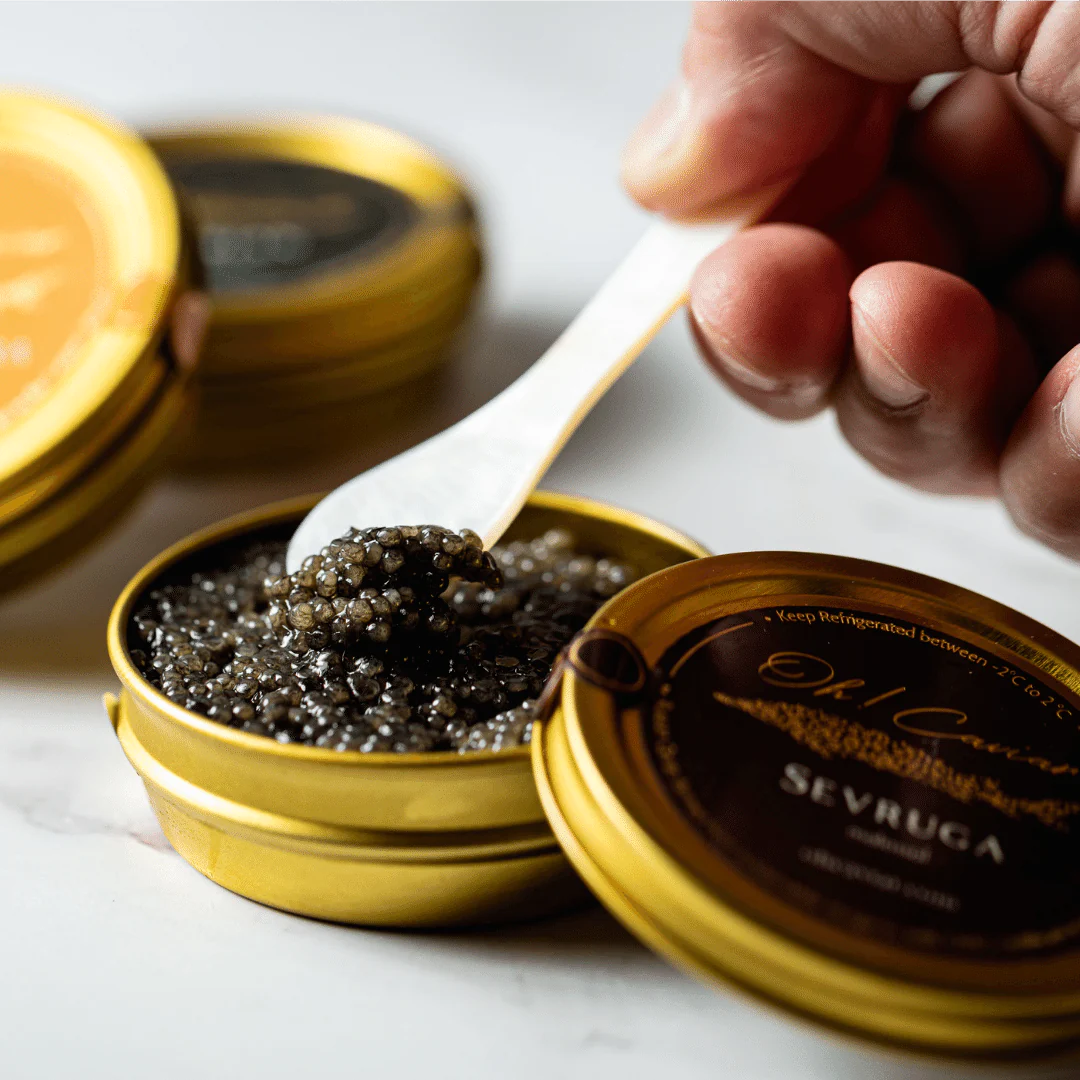
How Does The Taste Differ By Color?
The color of caviar typically does not affect its flavor, but it can be an indication of the type of sturgeon used to produce it. For example, black caviar is usually beluga or osetra, while golden-brown caviar is often sterlet or sevruga.
Black Caviar
Black caviar can range in flavor from mild and buttery (beluga) to nutty and briny (osetra).
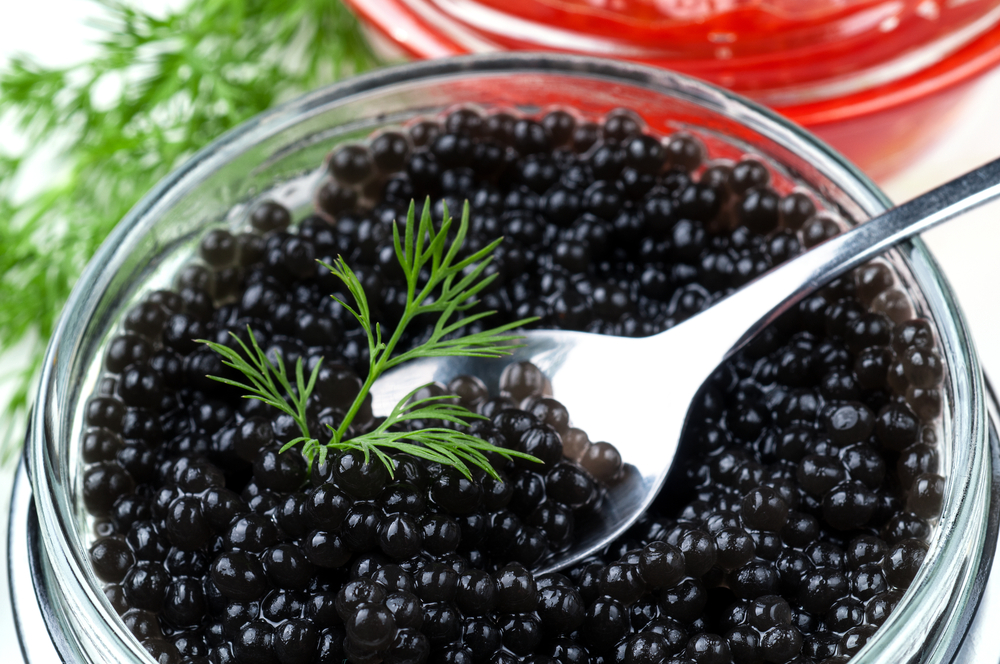
Golden-Brown Caviar
Golden-brown caviar is generally milder with a subtle hint of saltiness. It can also have a slightly nutty taste, depending on the type of sturgeon used.
Red Caviar
Red caviar is made from salmon roe, and it has a sweet, delicate flavor that complements dishes with strong flavors.

White Caviar
White caviar is a European delicacy made from sturgeon roe that has been cured and bleached to produce its ivory color. It has a delicate flavor with a slightly briny aftertaste.
The taste of caviar depends on the species of sturgeon used and how it’s prepared. Different types can range from mild and buttery to nutty and briny, while the color is usually an indication of the type of sturgeon. As a result, caviar lovers are able to enjoy a wide range of flavors and textures when tasting different varieties.
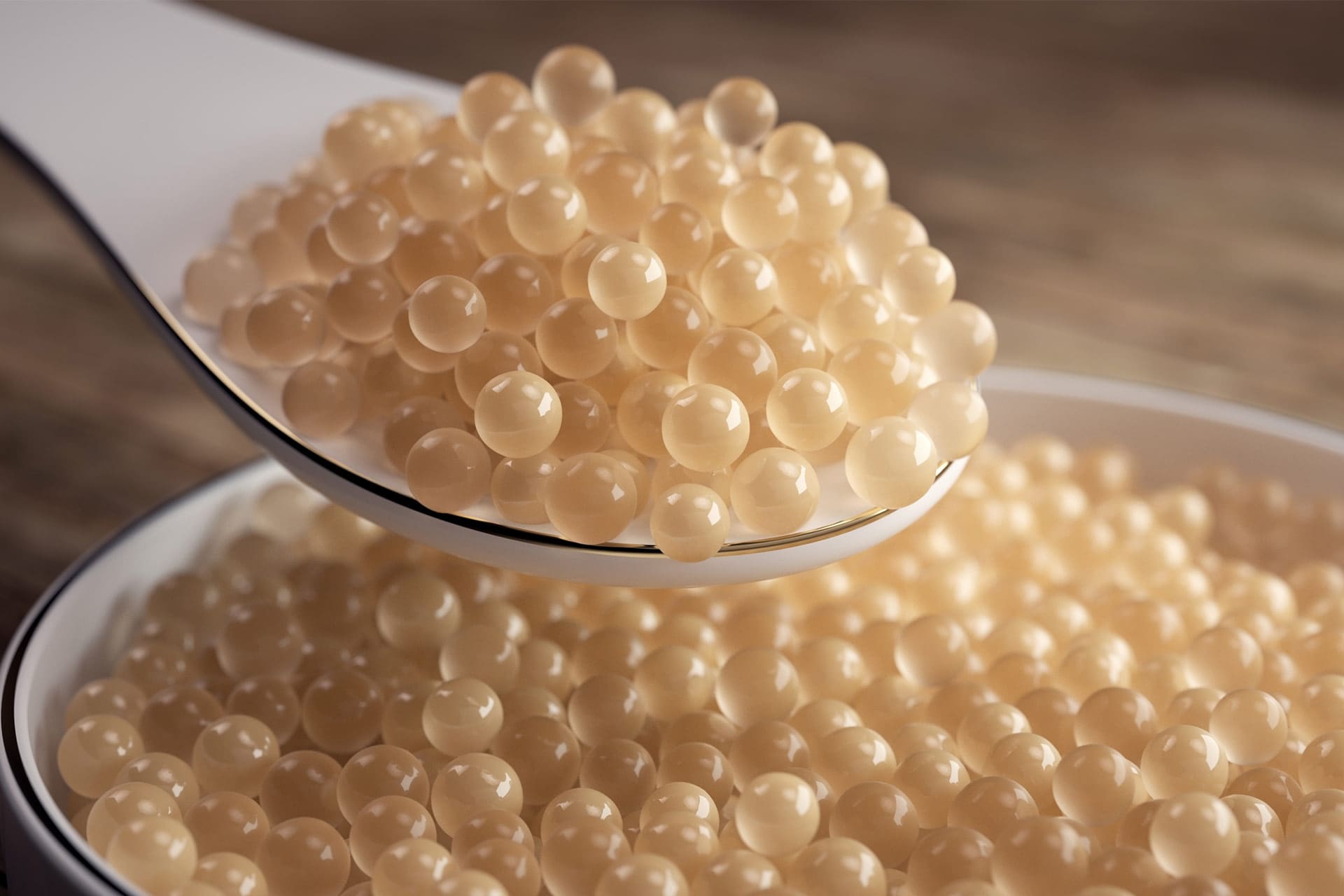
Why Is Caviar So Expensive?
Caviar is expensive for several reasons: its rarity, the care taken to produce it, and the cost of harvesting sturgeon from their natural habitats. Caviar can also be very labor-intensive to process and prepare, making it an even more costly item.
How Should Caviar Be Served?
Caviar is a luxurious delicacy with many different varieties that offer a wide array of flavors and textures. Depending on the type of sturgeon used and how it’s prepared, caviar can be mild and buttery or nutty and briny in taste. Caviar should never be served with metal utensils as this can alter its flavor. Instead, serve it with a mother-of-pearl or wooden spoon to preserve its delicate taste. Caviar should also be served chilled between 32 and 34 degrees so that the roes don’t burst.
Additionally, caviar is best served on its own or can be served as an hors d’oeuvre with accompaniments such as blinis, crackers or toast points, sour cream, minced onion and crème fraîche. It can also be used in dishes like omelets and pasta sauces if desired. If serving it alone, caviar should be served at room temperature. Accompany your caviar dish with champagne, vodka or a dry white wine. This will help to enhance the flavor of the caviar and make for an enjoyable dining experience.
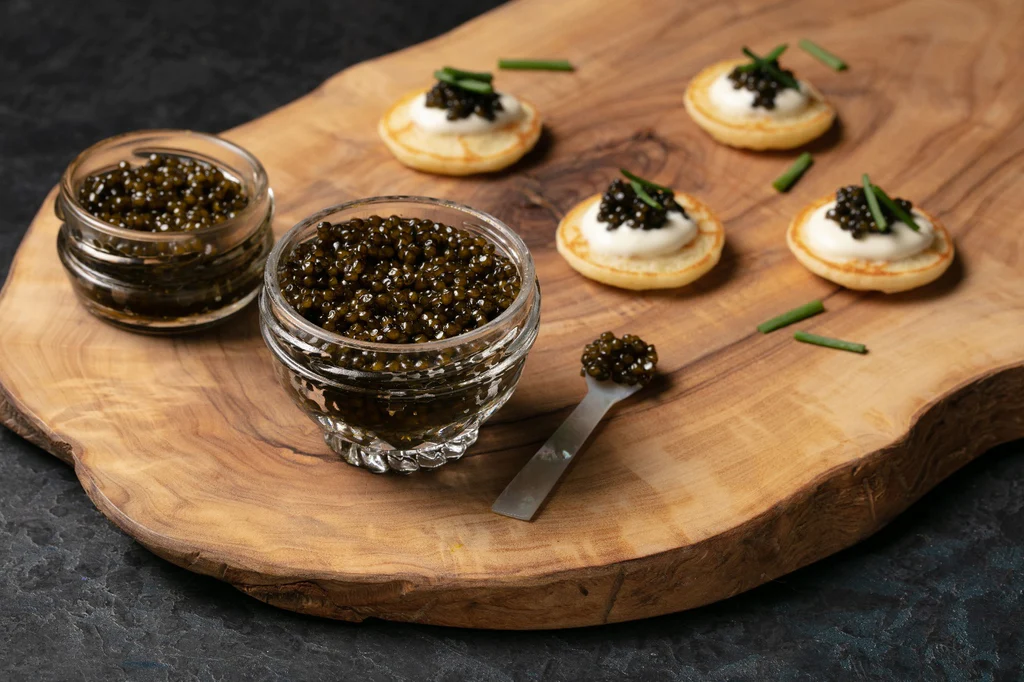
Some Recipes Using Caviar As Ingredients
Caviar is a luxurious delicacy, with many different varieties that offer a wide array of flavors and textures. As such, it adds an indulgent touch to any dish. From simple appetizers like deviled eggs topped with caviar to more elaborate dishes like blini canapes or creamy risotto, there are tons of recipes you can try that incorporate caviar.
Caviar can also be used in more traditional recipes like blinis with smoked salmon, scrambled eggs with chives and caviar or garnish for grilled fish dishes. It can even add a touch of luxury to salads, pasta dishes and desserts. If you’re looking for something different, why not try caviar-stuffed mushrooms or a caviar tart. Overall, caviar is an indulgent and tasty treat that can also provide a wealth of nutrition benefits. If you’re looking for something special to add to your dishes, consider using caviar to create delicious and impressive meals. Just remember to enjoy in moderation.
Conclusion: What Does Caviar Taste Like
Caviar is a luxurious delicacy made from roe of sturgeon fish. So, what does caviar taste like? It can have different colors and flavors, ranging from mild and buttery (beluga) to nutty and briny (osetra). The color of the caviar does not typically affect its flavor, but it can be an indication of the type of sturgeon used to produce it. No matter what type of caviar you try, its unique taste is sure to make a lasting impression. Thank for reading at yongkangstreetnyc.com.
FAQs: Flavors Of Caviar
What’s so special about caviar?
Discover the remarkable qualities of caviar. Extracted from select sturgeon species, this renowned delicacy is an excellent source of omega-3 fatty acids, vitamin B12, selenium, and other essential minerals – delivering impressive nutritional value in every bite, regardless of serving size.
Is caviar eaten raw?
Did you know that true caviar is always served and eaten raw? While roe may be cooked, caviar is best when enjoyed in its pure, unadulterated form. Discover the authentic taste of this luxurious delicacy at your next fine dining experience.
What does fake caviar taste like?
Real caviar typically has a salty and fishy taste while fake caviar may use different types of fish eggs and may have a very sweet taste.
Does caviar taste like sushi?
Despite coming from fish, it doesn’t have an overwhelming “fishy” taste. Instead, it offers a delightful reflection of the ocean’s flavor. The initial taste is a combination of saltiness and brininess, which is followed by a brief, mellow flavor. Some have even likened it to a more indulgent version of raw oysters.
Why does caviar taste salty?
Without question, caviar’s taste is universally characterized by its undeniable saltiness. Whether you prefer classic or modern types, salt is an essential ingredient. In fact, caviar enthusiasts understand that it’s the distinct tang of salt that gives this luxurious delicacy its unique appeal.
What caviar is most flavorful?
Discover the most exquisite and flavorful caviar experience with the supreme choice of Beluga caviar. Harvested from the pristine waters of the Caspian Sea, the Beluga sturgeon Huso huso provides a rich, buttery taste that is unrivaled in the world of luxury gastronomy. Renowned for its purity and hailed by gourmands worldwide, Beluga caviar represents the ultimate delicacy for those seeking the ultimate culinary experience.
Does caviar even taste good?
The truth is that good caviar does indeed taste delicious! When fresh and high-quality, it boasts a rich and nuanced flavor profile that might surprise you. Keep an eye out for fishiness or excessive saltiness – signs of low-quality caviar. Texture-wise, caviar is smooth with a subtle resistance from the roe skin, although this can vary depending on the variety. Indulge in the refined tastes of premium caviar, and experience a world of luxurious flavors.
Does caviar taste bitter?
Well, it depends on the type. In fact, some varieties of red caviar are known for their spicy bitterness, which can actually be quite an enjoyable characteristic.
Why does red caviar taste bitter?
Studies have shown that the cause of the bitter taste in caviar may be linked to the presence of hexamine, a substance prohibited in Europe as a food additive.
Is it healthy to eat caviar?
Discover the health benefits of caviar: boost your reproductive health with omega-three fatty acids
Is caviar supposed to be sweet or sour?
While the saltiness varies by type, the small eggs provide a delightful burst in the mouth, offering a buttery and nutty taste with a subtle sweetness.
Can caviar be sweet?
When it comes to caviar, freshness and firmness are essential. While some describe the flavor as salty water, others have used words like sweet, buttery, earthy, and nutty. Let’s explore the possibilities and see if caviar can indeed be sweet.

Chef Yong Kang has over 20 years of experience cooking in the finest restaurants, and is excited to present their vision to you and all our guests. Our caring and committed staff will ensure you have a fantastic experience with us.
We are also available for private events:, business lunches, dinners, and more. We would love to discuss how to be a part of your next event.Our restaurant refuses to compromise on quality, which is why we source our fresh ingredients from local farmers’ markets.










